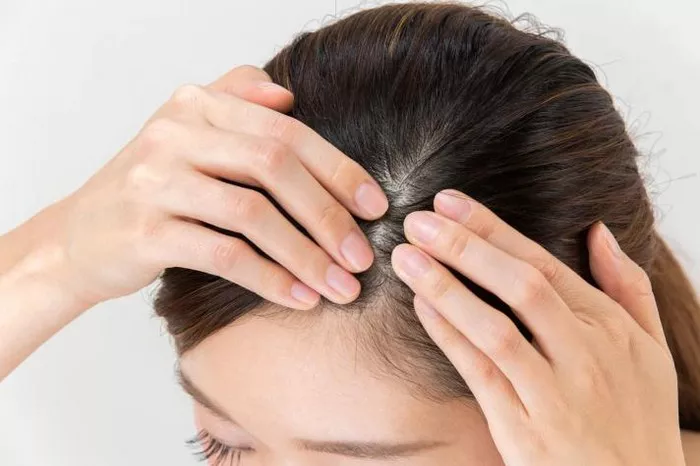We’ve all had days where our hair looks dull, dry, and lifeless—like it’s lost its spark. You might stare in the mirror and wonder, “Why does my hair look so dead?” As a hairstylist, I hear this question daily. The truth is, “dead” hair isn’t just about split ends or bad haircuts. It’s often a sign of damage that builds up over time. Let’s break down the why and how behind lifeless hair—and, most importantly, how to revive it.
What Does “Dead” Hair Really Mean?
Hair is technically “dead” the moment it grows out of your scalp. The living part of hair is the follicle beneath your skin. Once hair emerges, it’s made of keratin (a protein) and can’t repair itself. When we say hair looks “dead,” we mean it’s lost its natural shine, softness, and strength. Think:
- Rough texture
- Frizz or flyaways
- Lack of elasticity (hair snaps easily)
- Faded color or dullness
- Split ends or breakage
These issues stem from damage to the hair’s outer layer (cuticle) or inner structure (cortex). Let’s explore what causes this.
Heat Damage: The Silent Killer
What Happens:
Heat tools like blow dryers, flat irons, and curling wands strip moisture from hair. Temperatures above 300°F can melt the cuticle, leaving hair porous and brittle.
Signs of Heat Damage:
- Hair feels “straw-like”
- Ends look burnt or white
- Curls lose their pattern
- Color fades quickly
Solutions:
- Lower the heat. Use tools with adjustable settings—never go above 350°F for fine hair.
- Always use a heat protectant. Look for sprays with silicones (like dimethicone) or natural oils (argan, coconut).
- Air-dry when possible. Blow-dry on cool settings, and let hair dry 80% before styling.
Chemical Damage: Coloring, Bleaching, and Perms
What Happens:
Chemical treatments break down hair’s protein bonds to alter its structure. For example:
- Bleaching lifts color by opening the cuticle and dissolving melanin.
- Perms use harsh chemicals to reshape curls.
Over time, this weakens hair, making it prone to breakage.
Signs of Chemical Damage:
- Hair feels gummy when wet
- Excessive tangling
- Uneven texture
Solutions:
- Space out treatments. Wait 8–10 weeks between color sessions.
- Use bond-repair products. Olaplex or K18 rebuilds broken protein bonds.
- Deep condition weekly. Look for masks with hydrolyzed keratin or shea butter.
Environmental Stressors: Sun, Wind, and Water
What Happens:
External factors wear down hair over time:
- UV rays break down keratin and fade color.
- Chlorine in pools strips natural oils.
- Hard water (high in minerals) leaves buildup, making hair dull.
Signs of Environmental Damage:
- Dryness after swimming
- Brittle strands
- Green or brassy tones (from copper in water)
Solutions:
- Rinse hair before swimming. Wet hair absorbs less chlorine.
- Wear hats or UV-protectant sprays.
- Install a shower filter to neutralize hard water.
Hair Care Mistakes: Over-Washing and Wrong Products
What Happens:
- Over-washing: Strips natural oils, forcing scalp to overproduce sebum.
- Harsh shampoos: Sulfates (SLS/SLES) create lather but dry hair out.
- Skipping conditioner: Leaves cuticles open, causing frizz.
Signs of Poor Hair Care:
- Greasy roots + dry ends
- Itchy scalp
- Hair looks flat or limp
Solutions:
- Wash less often. 2–3 times/week for most hair types.
- Use sulfate-free shampoos. Gentle cleansers like coco-glucoside maintain moisture.
- Condition correctly: Focus on mid-lengths to ends.
Health and Diet: You Are What You Eat
What Happens:
Hair reflects internal health. Nutrient deficiencies (iron, protein, biotin) or dehydration lead to weak, thinning hair. Stress and hormonal imbalances (thyroid issues, menopause) also play a role.
Signs of Internal Issues:
- Sudden hair loss
- Slow growth
- Dullness that won’t improve
Solutions:
- Eat protein-rich foods: Eggs, fish, nuts.
- Stay hydrated. Aim for 8 glasses of water daily.
- Consult a doctor if hair loss persists.
Mechanical Damage: Brushing, Towels, and Tight Hairstyles
What Happens:
Rough handling causes breakage:
- Brushing wet hair: Hair stretches and snaps when damp.
- Tight ponytails: Pulls hair from follicles (traction alopecia).
- Terry cloth towels: Creates friction, roughing up cuticles.
Signs of Mechanical Damage:
- Short broken hairs around hairline
- Split ends
- Thinning at temples
Solutions:
- Use a wide-tooth comb on wet hair. Start from ends, work upward.
- Opt for loose styles. Scrunchies > elastic bands.
- Switch to microfiber towels or cotton T-shirts.
Can Dead Hair Be Revived?
While you can’t “heal” dead hair, you can improve its appearance:
- Trim split ends regularly to prevent further damage.
- Use leave-in conditioners for daily hydration.
- Try hair oils (jojoba, argan) to seal cuticles and add shine.
- Avoid further damage by addressing the root causes above.
Conclusion
“Dead” hair is often a cry for help. By identifying what’s causing damage—heat, chemicals, environment, or habits—you can take steps to restore its vitality. Be patient: Hair grows about half an inch per month, so results take time. When in doubt, consult a stylist for personalized advice. Your hair doesn’t have to look lifeless forever!
Related topics:
What Does Dead Hair Look Like: A Comprehensive Guide
How to Restore Dead Hair Follicles?


